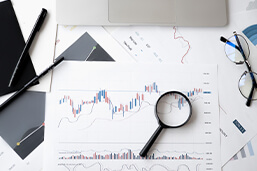
Control variables play a pivotal role in scientific methodologies, ensuring the integrity of research outcomes. These are specific variables that researchers keep constant throughout an experiment to minimize external influence and ensure that the results accurately reflect the relationship between independent vs. dependent variables.
Definition: Control variables
Control variables are essential empirical tools. They help us create replicable, verifiable data (i.e. statistics) from direct experimentation, observation, and sampling by setting hard limits. They also allow us to bypass ‘false’ causatives in observational studies.
Variables may be expressed as a qualitative or quantitative statement and may be limited (i.e. within a set range) or total. Integers (i.e. whole numbers) are usual for statistical controls. A single study may use many different control variables.
The importance of control variables
Control variables are crucial, as they greatly enhance an experiment’s internal validity. When you’re assessing a study’s statistical power, internal validity plays an important role.
Why? Quality, empirical statistics must reflect ‘control’ conditions relevant to that topic (i.e. model reality) to their absolute best. Improving internal validity means a study becomes more reliable, repeatable, broadly applicable, and likely to survive intense peer review.
Using control variables in experiments
Experimental control values let us isolate the dependent and independent variables in a closed environment. They’re the ‘lab’ variety.
Using control variables in non-experimental studies
Non-experimental control variables are similar. However, they’re tailored much more towards validating observations of natural phenomena, particularly human behavior.
Non-experimental variables are helpful when potential confounding causative factors (i.e. income, age, gender) may not be removed entirely from samples for ethical, legal, or practical reasons. Instead, they monitor or neutralize data on known causatives.
How to control variables
Three advanced techniques that use control variables help remove bias from sample sets – if applied correctly. Here’s how they work.
Control variable methodology – Random assignment
If you have a set prone to outliers or clusters with wildly different behavior, you may want to make sure ‘lucky’ or ‘unlucky’ samples don’t skew your findings.
Researchers may use variables to ‘scramble’ set populations containing biased sub-sets, offsetting sampling bias. Random assignment ensures that sub-samples, with a balanced demographic ratio, occur. Pure luck determines which sample points are selected.
Here’s another example.
Luckily, the scientists also find past papers indicating these three varieties map comfortably onto a standard natural distribution. The researchers quickly pour the seeds into a container and shake it thoroughly for ten minutes before selecting exactly 100 samples (c.33%). Here, randomization guards against confounding influence.
Modern statistical studies may use a digital database to calculate random samples rather than a simple glass jar. Demographic weighting (i.e. stratification) might also be applied to better model divided random populations.
Control variable methodology – Standardized procedures
Do you have a repetitive daily routine that governs your time? Experiments often do. The exact time and way something must be delivered may have surprising, unforeseen effects on a subject.
It’s therefore critical that all manual test procedures remain uniform. We may set variables as timed and listed instructions to ensure this happens. They may also exclude any eccentric behavior that might skew the tests.
Let’s look at our final practical example.
Control variable methodology – Statistical controls
If everything else fails? You can apply statistical control methods to limit bias via final analysis.
Sometimes, removing all traces of extraneous influence is impossible. By applying modeling, weighting, and averaging based on what’s known about the factors you’re trying to account for, a more realistic statistical picture may emerge.
Applying multiple linear regression may help. By using averaged predictors as hypotheticals to weight and limit your values, trends and correlations may be better isolated.
Control variables vs. Control groups
Control variables shouldn’t be confused with control groups! Control groups are governed by control variables, allowing the creation of a ‘neutral’ sub-sample.
| Control Variables: | Control Groups: |
| set a distinct rule or base value for a variable causative factor. | are single-study groups that create a frame of reference for other samples. |
| remain completely consistent across time. | are controlled by variables. |
| can affect sets or a singular value. | may change over time. |
| aren't created from a sampled population. | don't directly affect statistical results - outside of analysis. |
| are always created from a population of samples. |
FAQs
A scientific safeguard that details a factor in a study that should (ideally) be kept the same. Control variables can also set out what factors should be accounted for and excluded from causative arguments.
Control variables add immense statistical power and validity. They’re an easy-to-use, effective way to guard against confounding factors that might warp our understanding of a complex topic.
A good set of variables may create an unchanging, dependable ‘test chamber’. Within, researchers may modify an independent variable to see how it affects a dependent one without risk.
